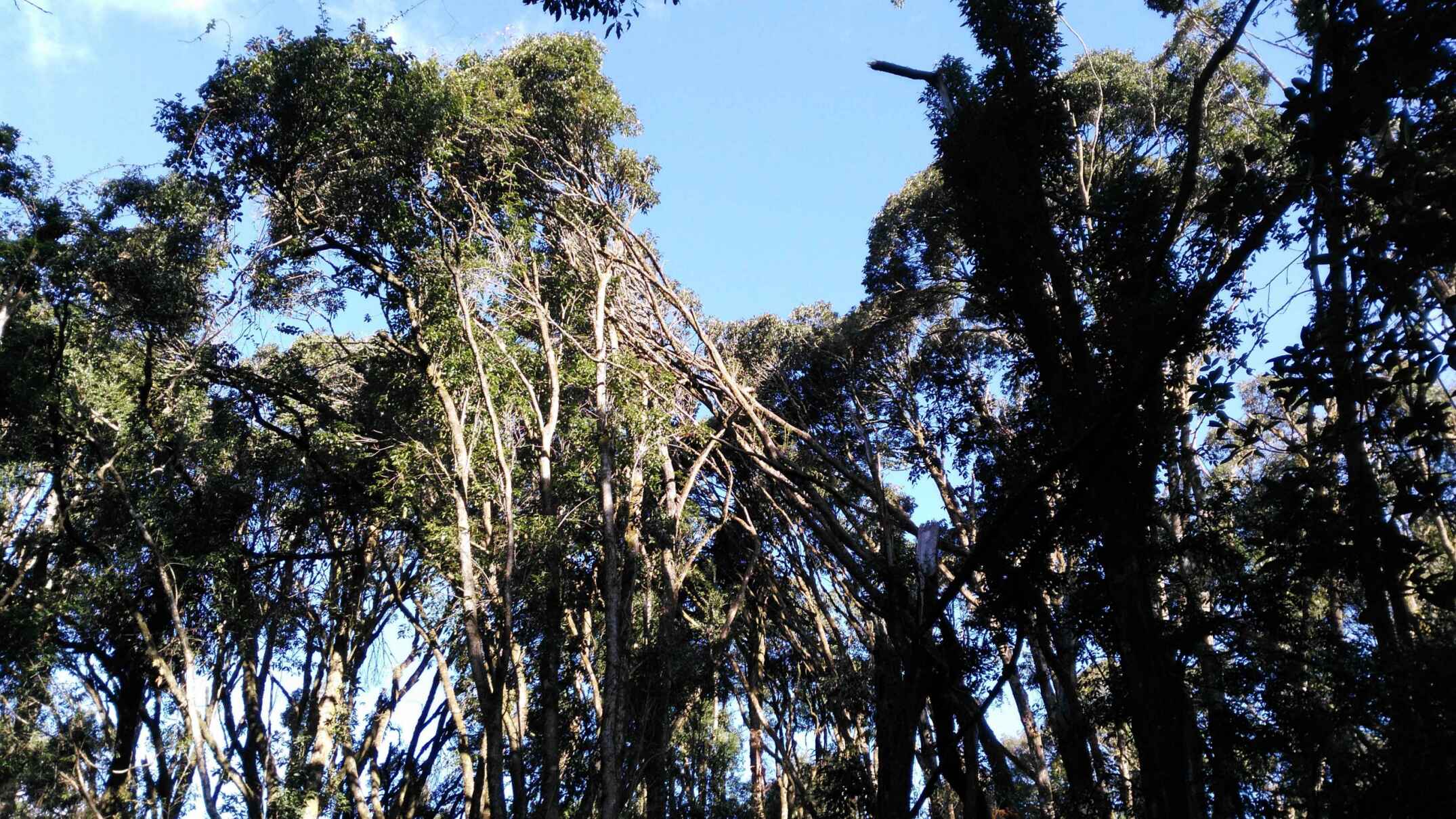Invasions of exotic species into high-elevation primary forests are historically less common and few studies have documented such invasions. A severe snow damage to the canopy of Ailaoshan high-elevation primary subtropical evergreen forest occurred in January 2015. Researchers observed the initial invasion of Ageratina adenophora, one of the worst invasive species in China and Southeast Asia, into the forest after severe snow damage.
Prof. CAO Min and his team of Xihsuangbanna Tropical Botanical Garden (XTBG) conducted a study to see how the snow damage disturbed the forest canopy and promoted the invasion of non-native species in Ailaoshan forest. They examined the relationship between canopy disturbance and the germination of Ageratina adenophora (Asteraceae), using seedling population data from a 20-ha forest dynamics plot in Ailaoshan mountain nature reserve, southwest China.
By using a digital camera, the researchers measured the canopy openness after the snow damage during the second seedling census in November 2015. They also held field measurements of leaf area index before and after the snow damage, combining with measurements of canopy gaps and associated light conditions.
The researchers then measured the biotic factors (tree seedling species richness, herb species richness and herb coverage), abiotic factors (elevation, slope, convexity and soil moisture), and the density and spatial distribution of A. adenophora ten months after the snow damage.
Seedling germination experiments were conducted in the lab to test the relationship between light availability and the germination of the invasive branched herb, showing the branched herb to be light demanding.
They documented a novel outbreak of a strongly invasive alien branched herb in the interior of a primary montane forest following snow damage to the forest canopy. The density of this invasive species increased with increasing canopy openness.
The study suggested that the damage to the canopy structure, as a result of a strong snow storm, increased the light availability in the understory which stimulated the germination of A. adenophora seeds from the soil seed bank to establish populations in newly opened areas. Thus, the snow damage to the canopy facilitated invasion of A. adenophora in Ailaoshan forests.
The study entitled “Snow damage to the canopy facilitates alien weed invasion in a subtropical montane primary forest in southwestern China” has been published in Forest Ecology and Management.
Contact
CAO Min Ph.D Principal Investigator
Key Laboratory of Tropical Forest Ecology, Xishuangbanna Tropical Botanical Garden, Chinese Academy of Sciences, Mengla, Yunnan 666303, China
Tel: 86-871-65160998
E-mail: caom@xtbg.ac.cn

Severe snow damaged AIlaoshan forest (Image by SONG Xiaoyang)

The forest canopy damaged by severe snow. (Image by SONG Xiaoyang)


